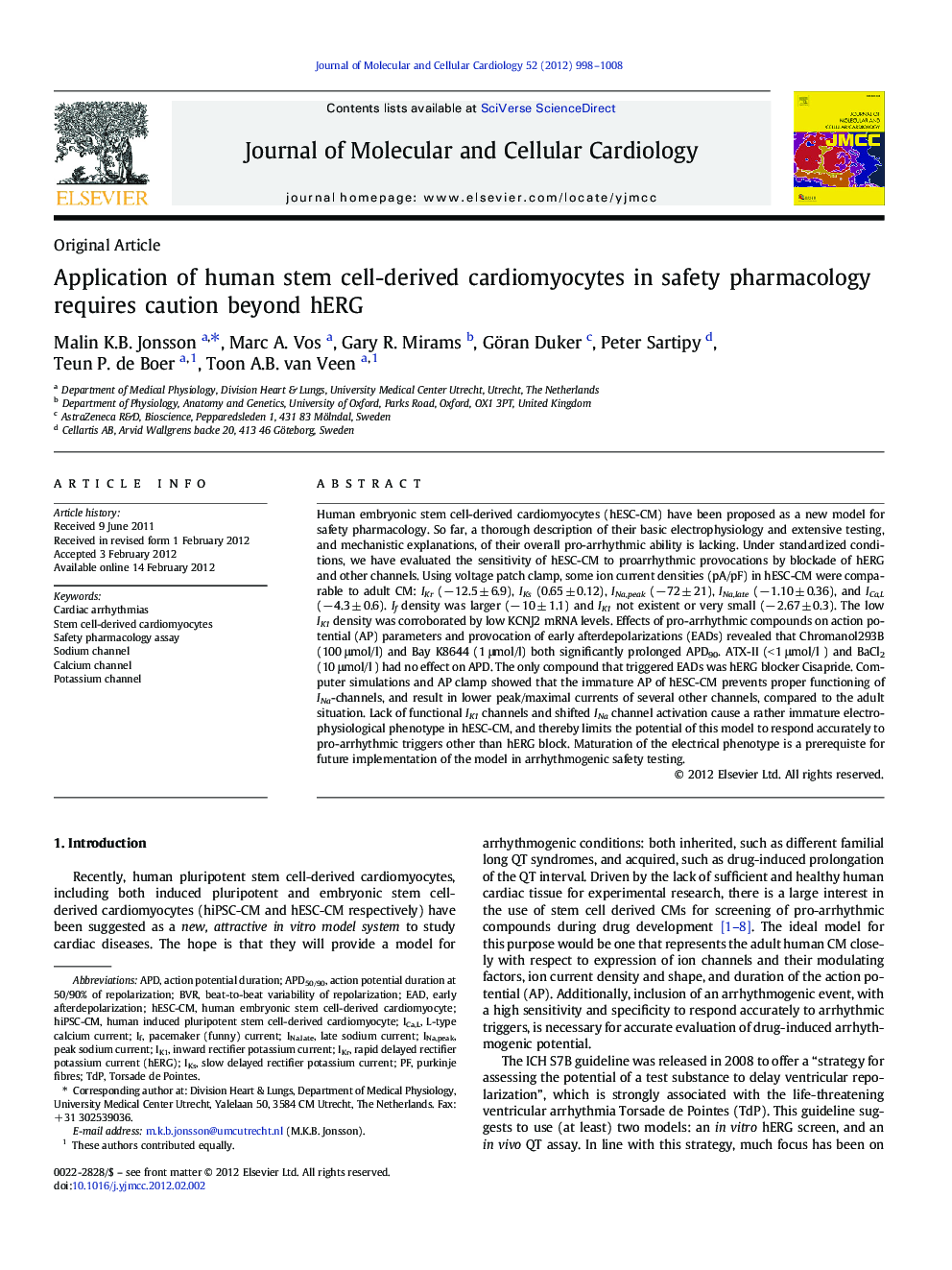| Article ID | Journal | Published Year | Pages | File Type |
|---|---|---|---|---|
| 2190682 | Journal of Molecular and Cellular Cardiology | 2012 | 11 Pages |
Human embryonic stem cell-derived cardiomyocytes (hESC-CM) have been proposed as a new model for safety pharmacology. So far, a thorough description of their basic electrophysiology and extensive testing, and mechanistic explanations, of their overall pro-arrhythmic ability is lacking. Under standardized conditions, we have evaluated the sensitivity of hESC-CM to proarrhythmic provocations by blockade of hERG and other channels. Using voltage patch clamp, some ion current densities (pA/pF) in hESC-CM were comparable to adult CM: IKr (− 12.5 ± 6.9), IKs (0.65 ± 0.12), INa,peak (− 72 ± 21), INa,late (− 1.10 ± 0.36), and ICa,L (− 4.3 ± 0.6). If density was larger (− 10 ± 1.1) and IK1 not existent or very small (− 2.67 ± 0.3). The low IK1 density was corroborated by low KCNJ2 mRNA levels. Effects of pro-arrhythmic compounds on action potential (AP) parameters and provocation of early afterdepolarizations (EADs) revealed that Chromanol293B (100 μmol/l) and Bay K8644 (1 μmol/l) both significantly prolonged APD90. ATX-II (< 1 μmol/l ) and BaCl2 (10 μmol/l ) had no effect on APD. The only compound that triggered EADs was hERG blocker Cisapride. Computer simulations and AP clamp showed that the immature AP of hESC-CM prevents proper functioning of INa-channels, and result in lower peak/maximal currents of several other channels, compared to the adult situation. Lack of functional IK1 channels and shifted INa channel activation cause a rather immature electrophysiological phenotype in hESC-CM, and thereby limits the potential of this model to respond accurately to pro-arrhythmic triggers other than hERG block. Maturation of the electrical phenotype is a prerequiste for future implementation of the model in arrhythmogenic safety testing.
► Stem cell-derived cardiomyocytes present an immature electrophysiological phenotype. ► Lack of functional IK1 channels cause a relatively positive membrane potential. ► Sodium channel activation is shifted towards positive membrane potentials. ► Provocation of arrhythmias was only successful following hERG block.
